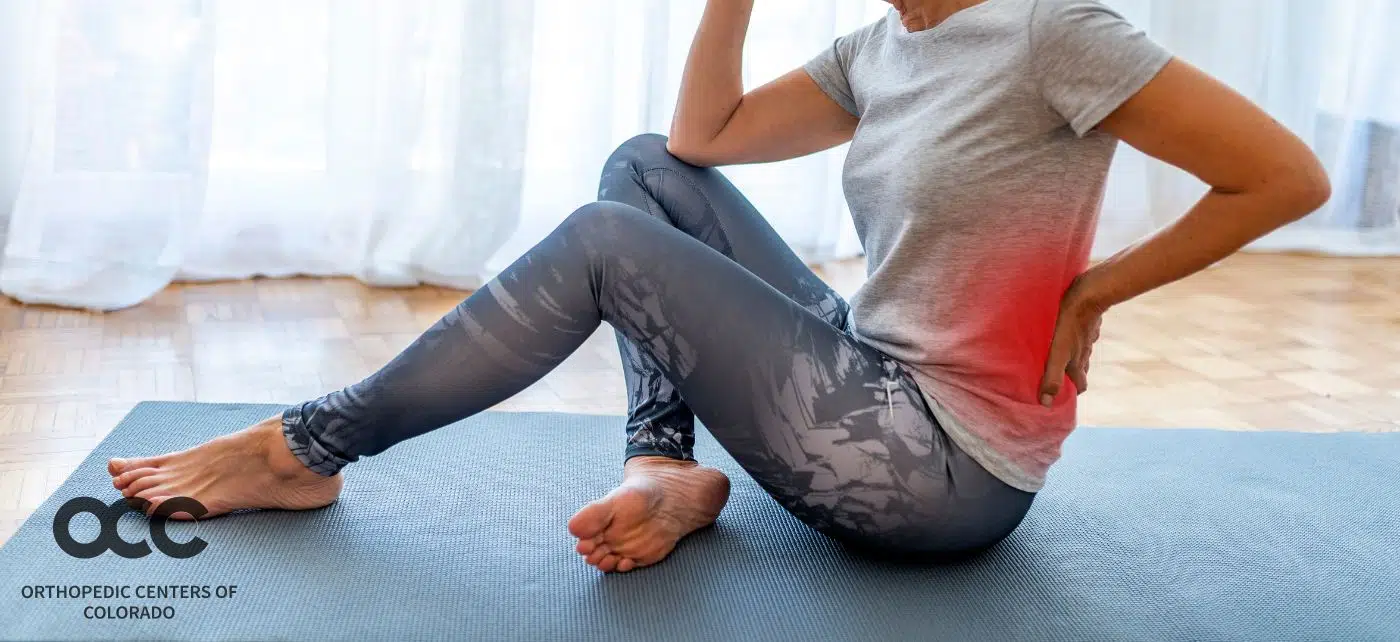Are you looking for lower back pain relief? Roughly 80 percent of adults experience lower back pain at one time or another, making it the third most burdensome condition among Americans, according to the Global Burden of Disease 2010 study.
Thankfully, most lower back pain is “acute” – or short-term – lasting only a few days or weeks. This type of pain typically comes from strain on the lower back muscles after repetitive motion or heavy lifting, and symptoms can be relieved with rest, ice, and an NSAID like Ibuprofen.
But when pain does not subside after more than 12 weeks, it’s considered chronic. Around 20 percent of those affected by acute lower back pain develop chronic lower back pain. Whether short-term or chronic, here are some of the most common causes of lower back pain and ways to prevent or address them:
A sudden increase in activity: Spring cleaning, gardening, and other outdoor activities have made many of us more active than we were over the winter. This sudden shift in activity level can make for sore muscles throughout the body – especially the lower back. If you’ve been sedentary and are inspired to get moving, take a measured approach. Limit your period of exertion to 10-20 minutes the first few times, and build up your strength and endurance over time. If you are working in the yard or the house, take care to use tools and postures that support the body, like lifting with your legs and using a knee pad in the garden, rather than bending from a standing position.
Sitting too long or the wrong way: Even if your activity levels are relatively consistent, lower back pain can also come from poor posture and sitting too long in one position, such as at a desk or on a long flight or car ride. If you’re sitting at home or in the office, you have many options to minimize or eliminate lower back pain. Start by sitting up straight and keeping your feet flat on the floor – good posture can go a long way to alleviate pain.
If you are accustomed to slouching, you’ll find that good posture takes practice and strength over time as you learn to engage your core and back muscles. You can also sit on an exercise ball or stand, as both require you to engage your muscles to stay balanced. Standing desks are more popular and affordable than ever, and many are adjustable from sitting to standing so you can take breaks as your body gets accustomed to the change.
If you’re riding in a car or a plane, use lumbar support. Many cars have seat settings for the lumbar area, but planes obviously do not. Rolling up a small towel or your jacket can provide the same benefit: simply place it at the small of the back, near your belt level.
Lack of Fitness: Back pain is more common among those who are not physically fit, particularly if they are carrying any extra weight. Excess body weight puts more stress on the back, and weak core muscles cannot counterbalance that weight to support the spine. In other words, mind your body weight and focus on building core strength. Our team of specialists recommends exercises to strengthen your core and back. The stronger your body overall, the more you can support your spine, and the better your back will feel.
Carrying too large a load: Whether you carry a backpack, briefcase, messenger bag, purse, or even a baby, the weight of your load and how you carry it can cause or prevent lower back pain. Heavy loads strain the back and fatigued muscles, so be mindful not to overload backpacks and bags – especially for children. Wearing any type of bag on a single shoulder puts the spine out of balance, which can exacerbate the problem. Holding a child on one arm or hip has a similar effect. Instead, look for a bag or baby carrier that allows you to center the weight across your back or core.
Injury and disease: Back pain can also be related to degenerative diseases like arthritis, trauma, and disk injuries like bulging or ruptured (herniated) disks which can also lead to sciatica (when the herniated disc presses on the sciatic nerve, often causing additional pain in the legs and feet). If you have chronic lower back pain and have tried tactics to relieve the pain but still don’t have relief, it’s time to see an orthopedic spine doctor. Several problems can change the spine’s structure or damage the vertebrae and surrounding tissue. Understanding the cause of your back pain is the key to proper treatment.
The highly qualified neck and spine orthopedic surgeons and physiatrists at Advanced Orthopedic & Sports Medicine have expertise in lower back pain relief using conservative, comprehensive care. Physical therapy, interventional spine care, and injections are among the most common. If spine surgery is necessary, our board-certified spine surgeon has advanced training in lower back procedures to help you overcome pain and live an active life.









